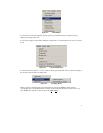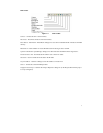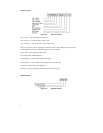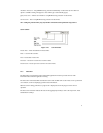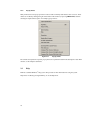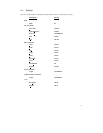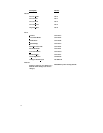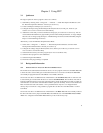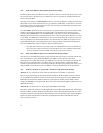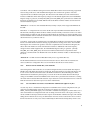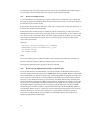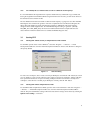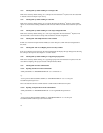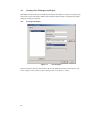13
Chapter 3 Using FDT
3.1 Quickstart
The stages required in order to program a device are as follows:
1) Start FDT by selecting ‘Start’->‘Programs’ -> ‘Renesas’ -> ‘Flash Development Toolkit3.07’, then
the ‘Flash Development Toolkit3.07’ shortcut [see section 3.3]
2)
Create a Workspace and Project [see section 3.4.1]
3)
Configure the Project using the Flash Project Wizard (select device, kernel, port, mode etc) [see
sections 3.4.2 to 3.4.8 or section 3.5 for Generic Boot]
4)
Add the file or files that you want to download to the project [see sections 8.1.2.1/8.2.2/3.7]. You can
now download individual files by right clicking on them in the Workspace Window, or merge multiple
files into a device image (using the Project-> Rebuild Image menu item) and download that (using the
Project-> Download Image menu item).
Alternatively, to start in FDT Basic Simple Interface Mode:
1)
Select ‘Start’->‘Programs’ -> ‘Renesas’ -> ‘Flash Development Toolkit3.07’, then the ‘Flash
Development Toolkit3.07 Basic’ shortcut [see section 3.3]
2)
Configure the settings using the Wizard (select device, kernel, port, mode etc) [see sections 3.4.2 to
3.4.8 or section 3.5 for Generic Boot]
3)
Select the flash area that you want to program (User Area or User Boot Area).
4)
Select the file to program for each enabled area
5)
Select the Program Flash Button.
6)
Disconnect when programming is completed
3.2 Background Information
3.2.1 What are the User Area, User Boot Area and Data Areas?
The normal area of (internal) flash for Renesas devices, for user programs is known as the User Area. This
is where the code is stored which gets executed when the device is reset into User Mode. The User area
can normally be programmed from a Boot Mode or User Mode connection.
On some devices there is an additional area of flash known as the User Boot Area. This is where the code
is stored which gets executed when the device is reset into User Boot Mode. The User Boot Area tends to
be much smaller than the User Area and is typically used for storing an alternative boot stub, for setting up
communication via some other communications medium / protocol. Normally, the User Area and the User
Boot Area both start at the same address – this is possible because only one is ever mapped into the
memory map at one time. It is only possible to program the User Boot Area from Boot Mode - not from
User Mode.
On some devices there is an additional area of flash known as the Data Area. This area normally resides at
the other end of the memory map to the User Area, and unlike the case of the User Boot Area, the Data
Area is not contiguous with the User Area and always exists in the memory map.



